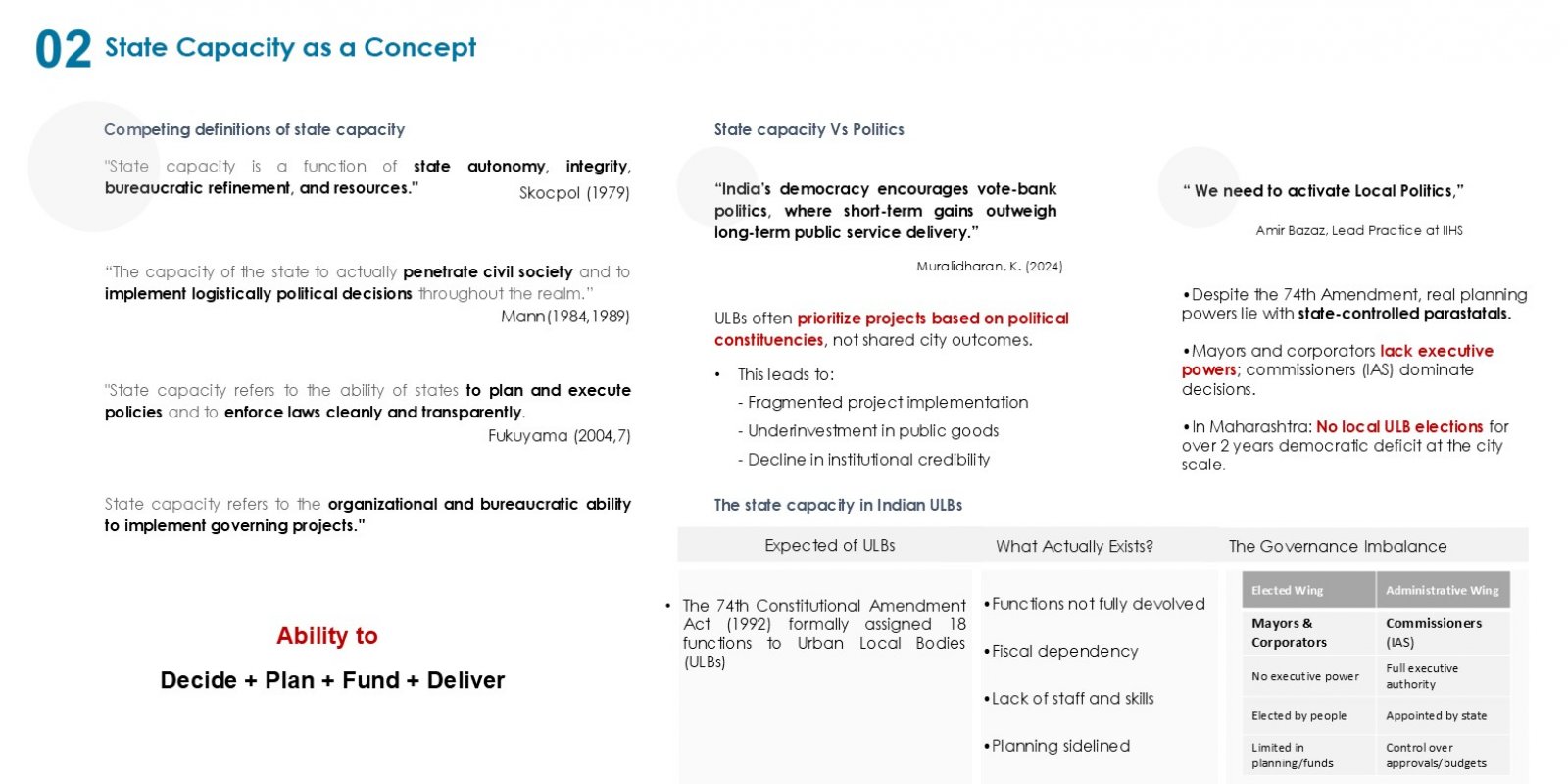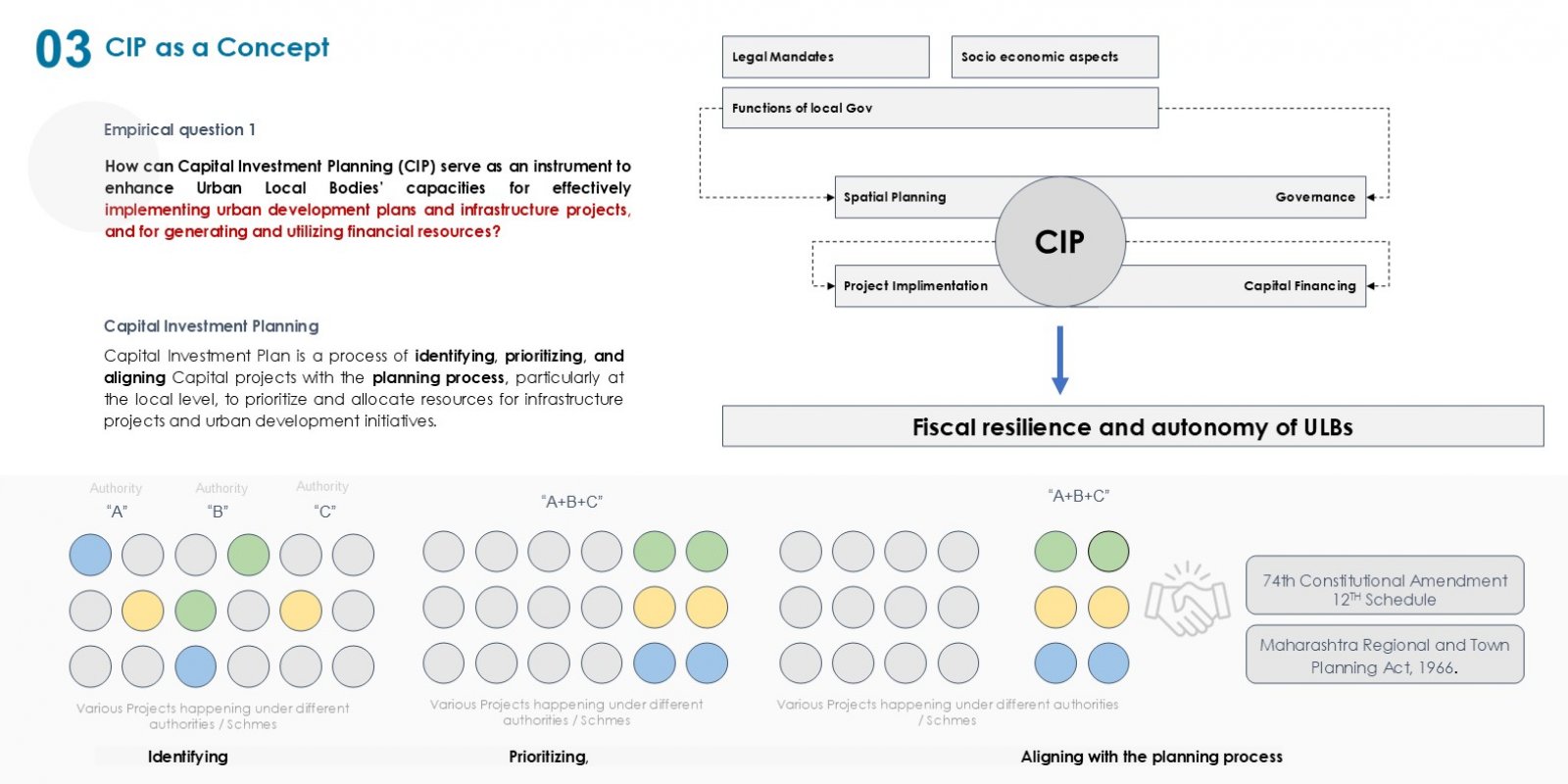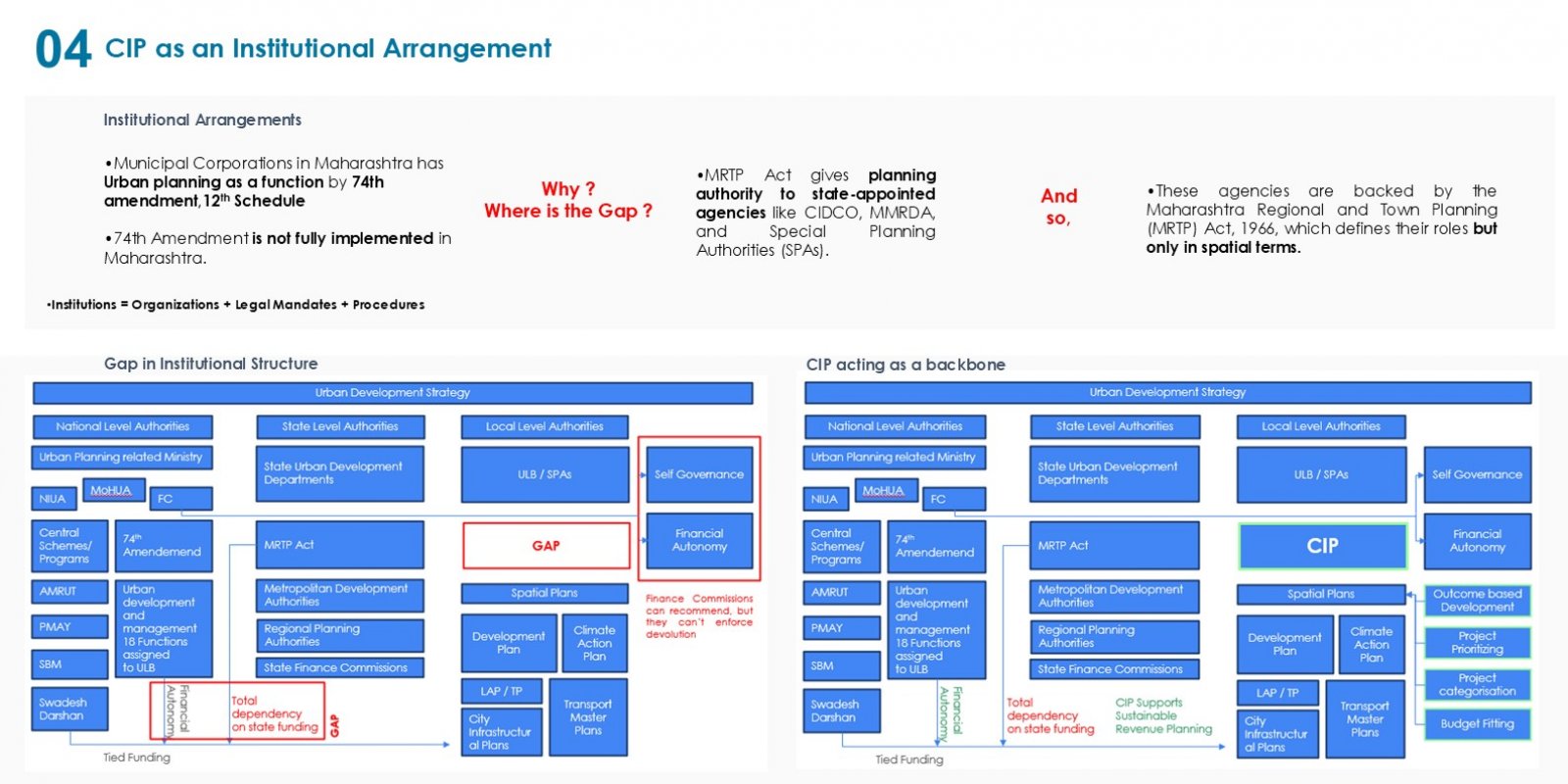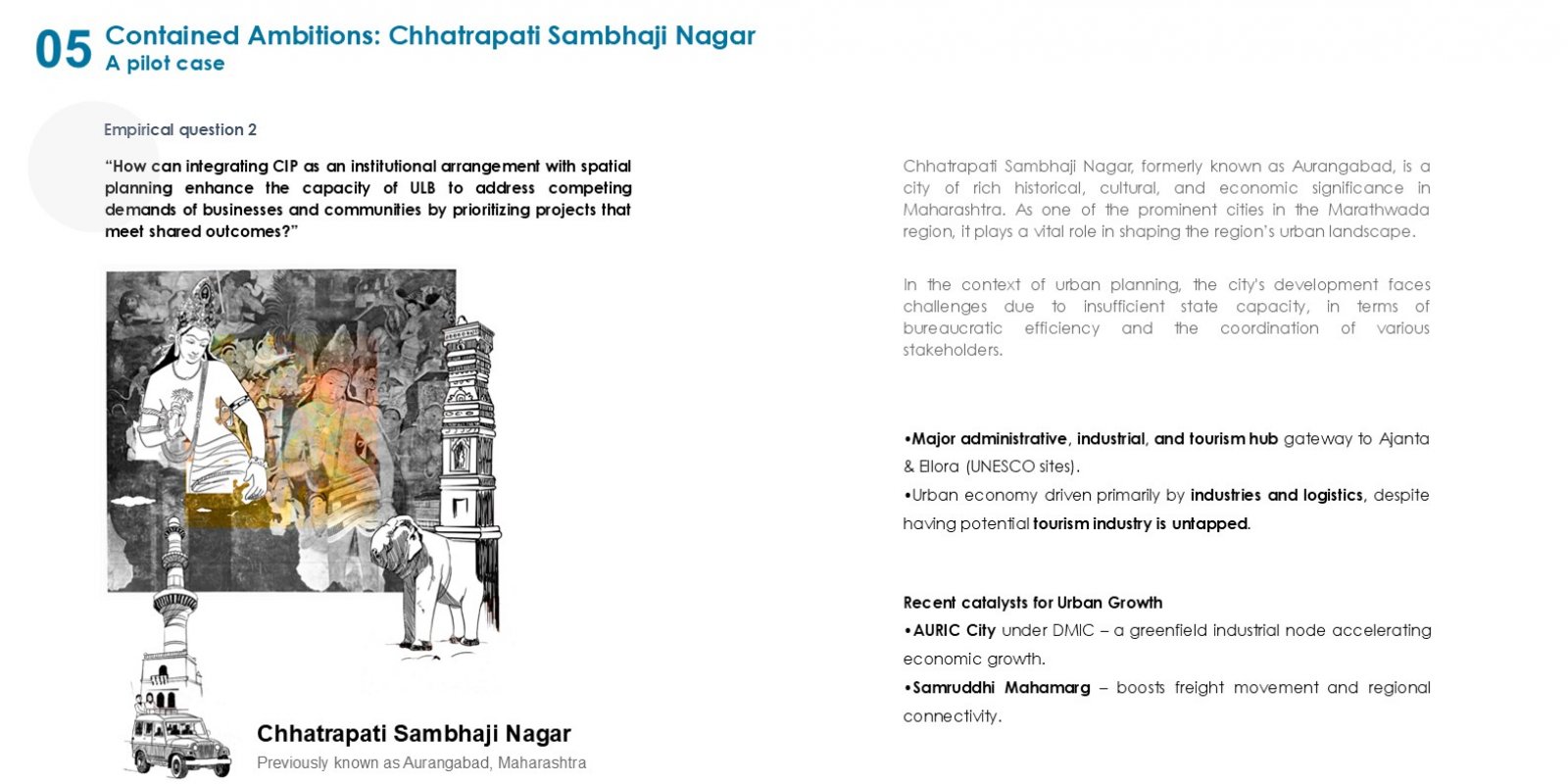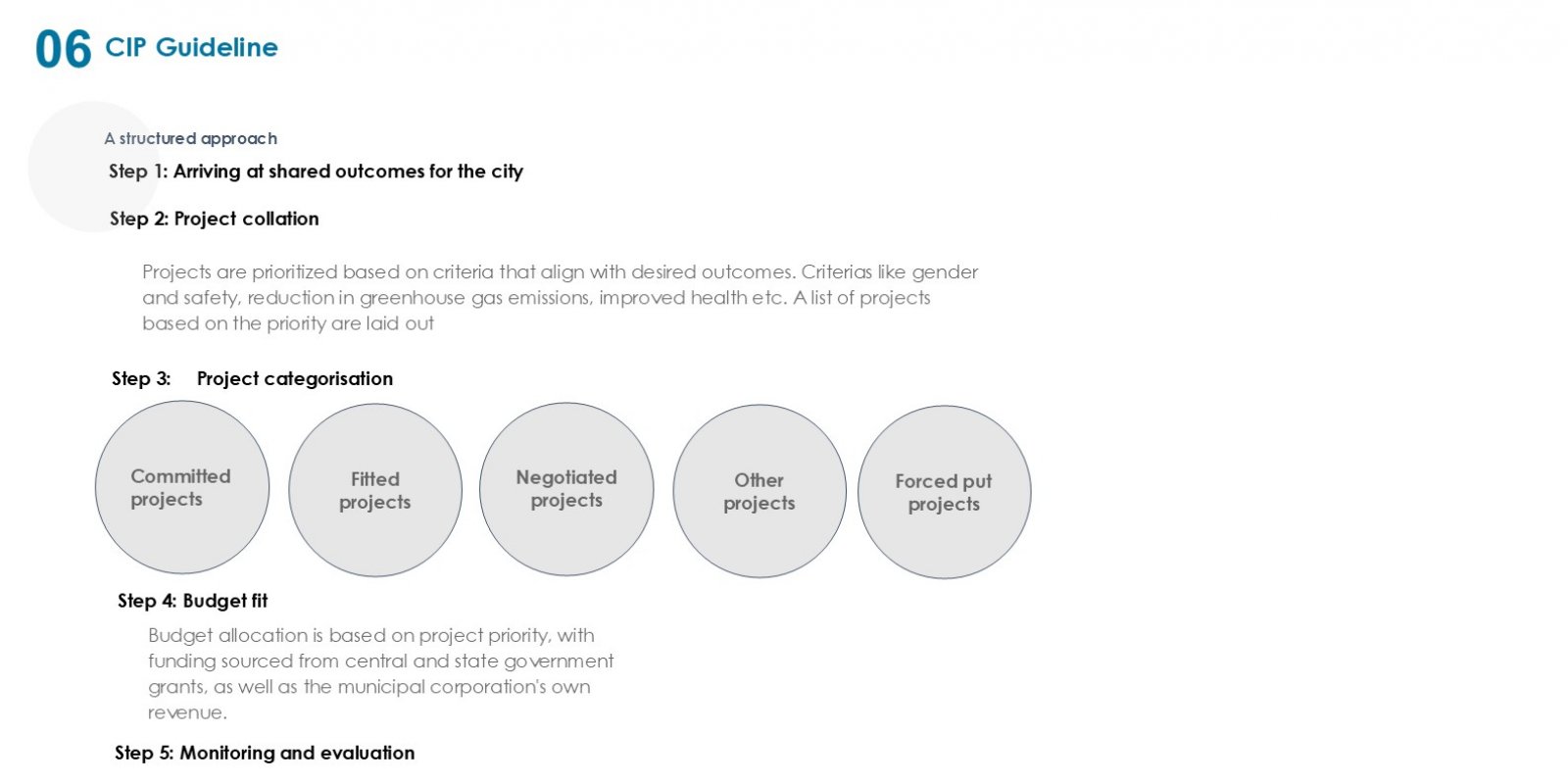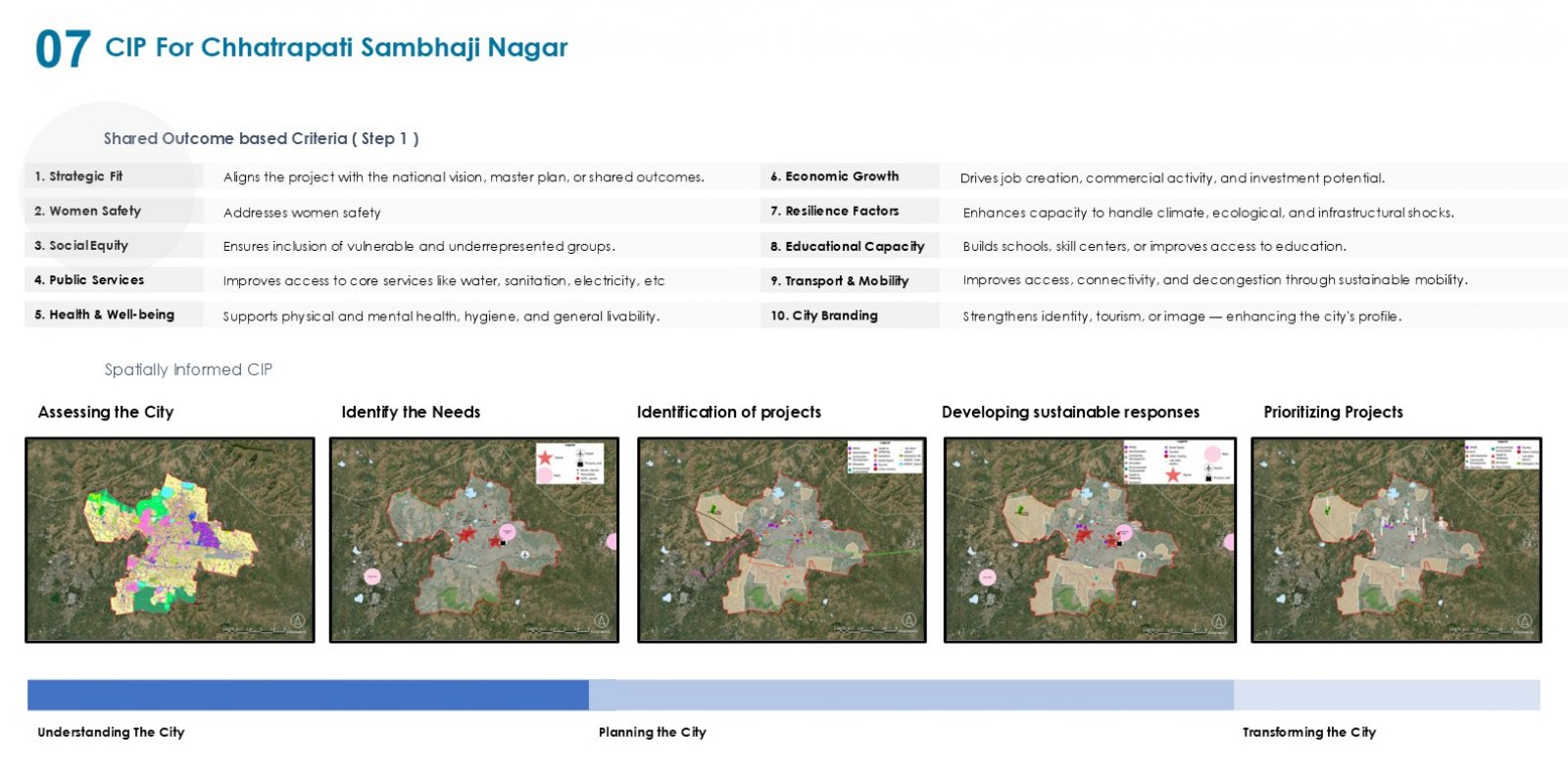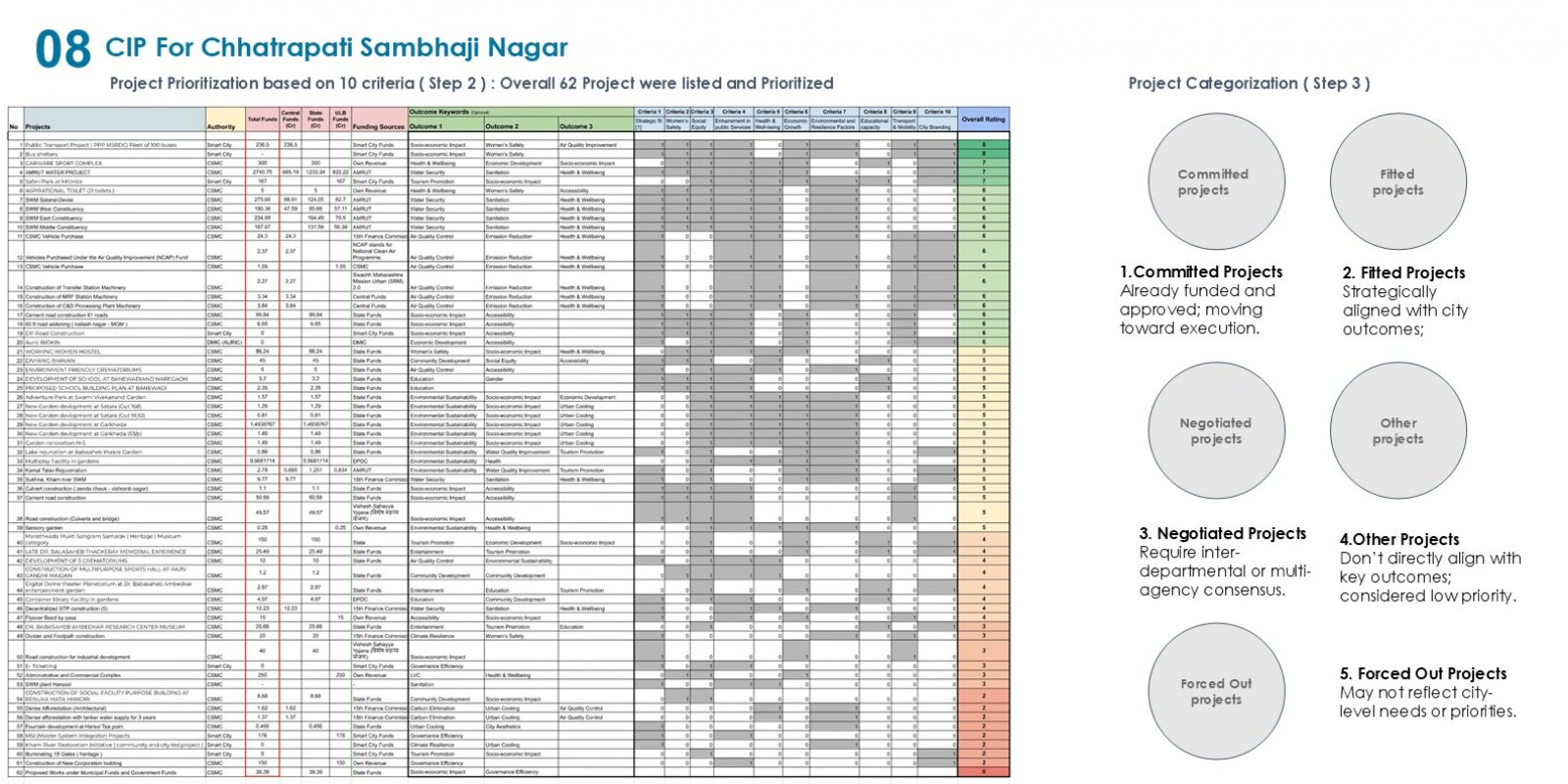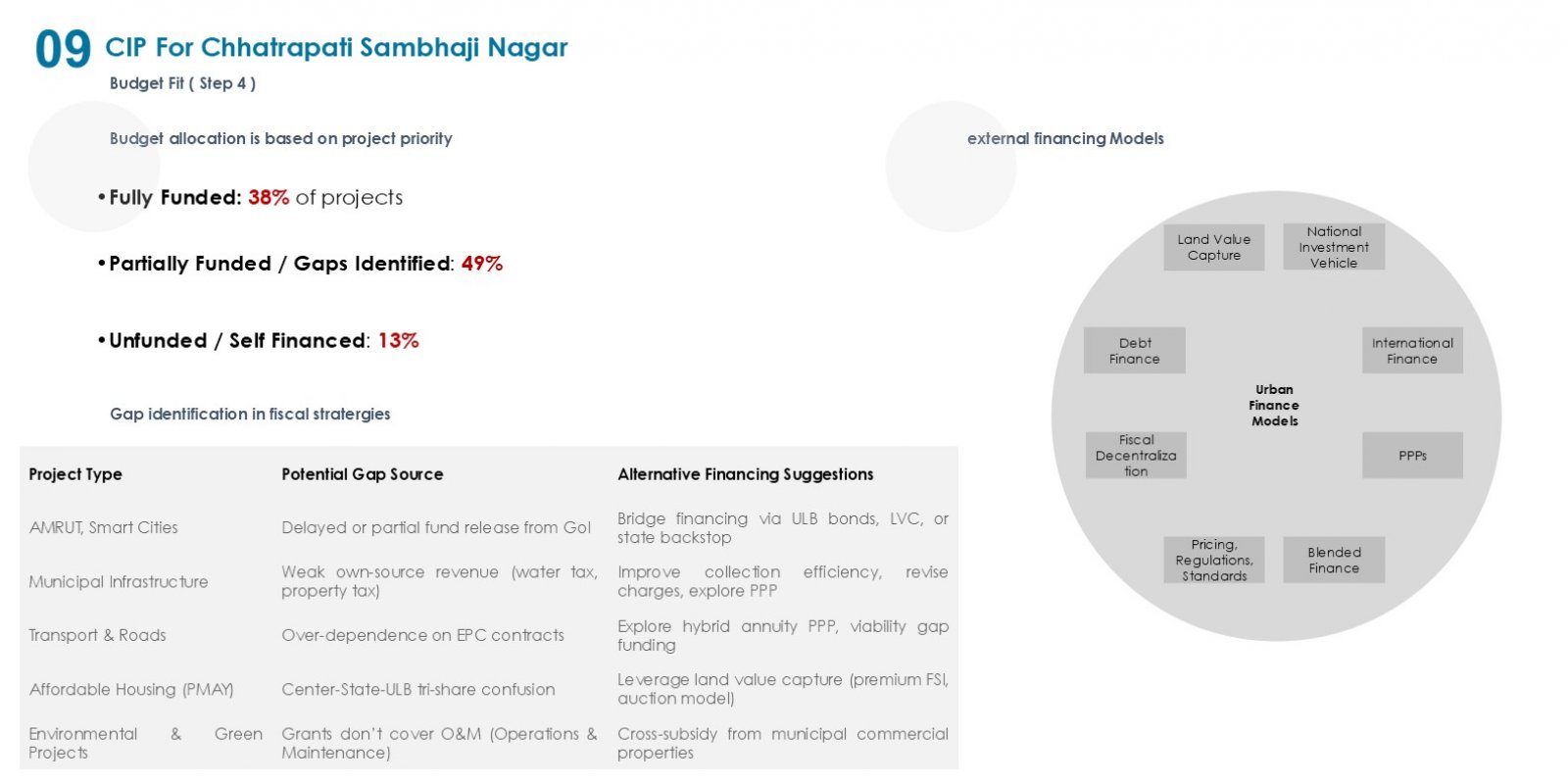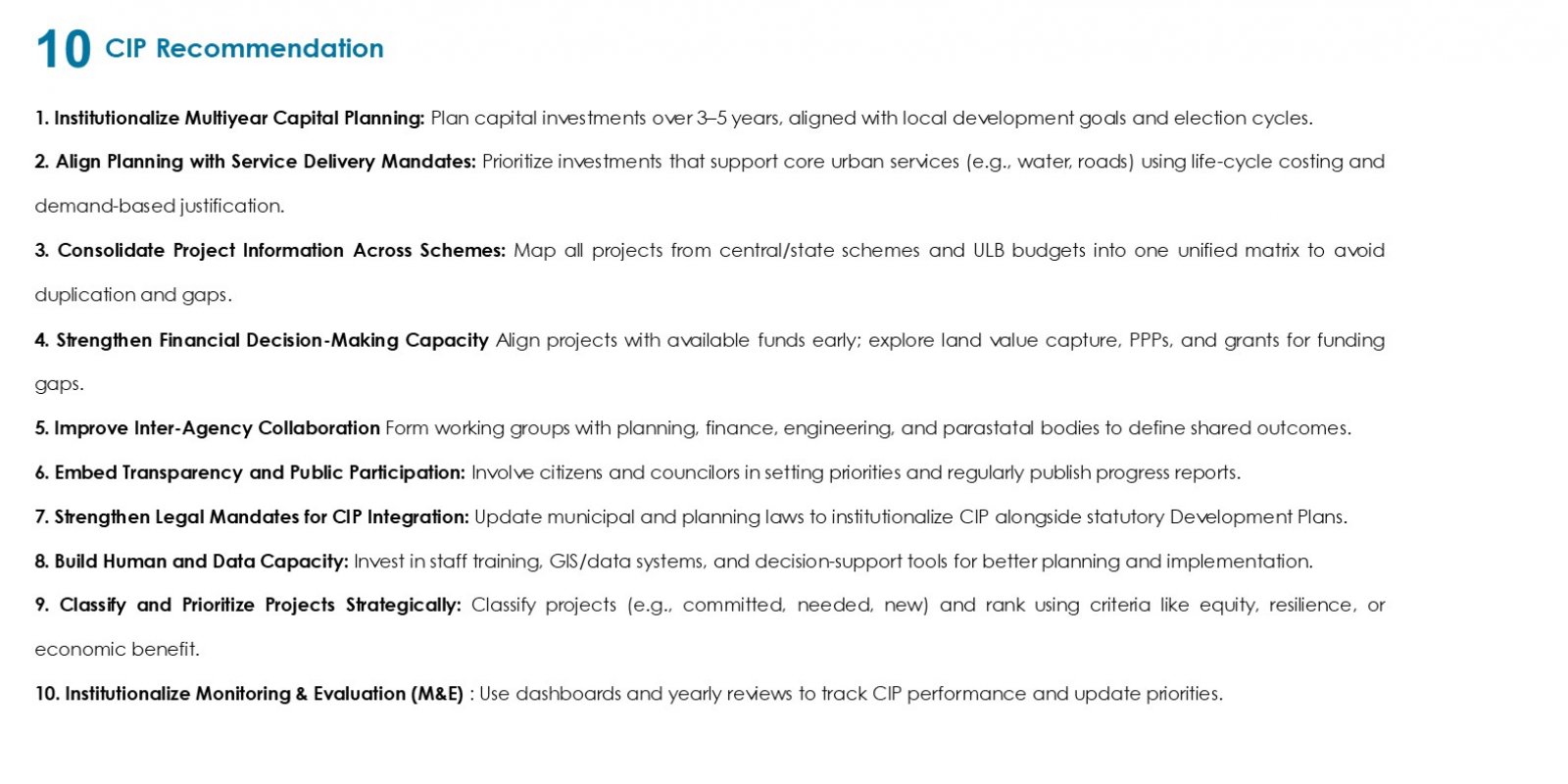Your browser is out-of-date!
For a richer surfing experience on our website, please update your browser. Update my browser now!
For a richer surfing experience on our website, please update your browser. Update my browser now!
This study explores how Capital Investment Planning (CIP) can enhance urban planning and governance capacity in Urban Local Bodies (ULBs), using Chhatrapati Sambhaji Nagar as a pilot case. It addresses challenges from institutional fragmentation and fiscal dependency due to incomplete devolution under the 74th Constitutional Amendment and the MRTP Act. Using a five-stage CIP framework, the study aligns development priorities with financial planning. Findings reveal governance gaps like dual custodianship and fiscal stress. CIP shows potential to bridge planning and finance, strengthen governance, and build implementation capacity, enabling ULBs to shift from fragmented planning to outcome-driven development

